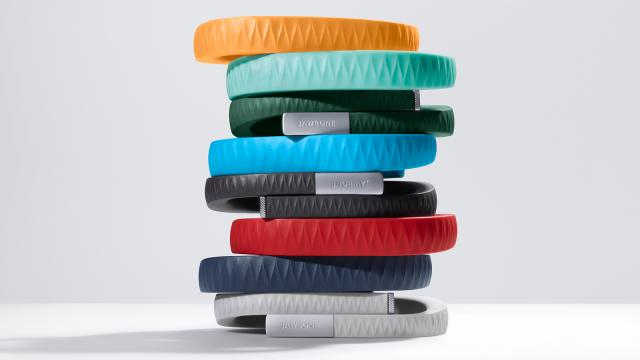Like the smartphone patent wars of yesterday, there’s a new arms race happening, and it’s all about wearables. Similar to the spats going on between Google, Apple, Microsoft and smartphone makers, it won’t matter to me or you. At least not anytime soon.
Earlier today Jawbone announced that it was acquiring BodyMedia, a 14-year-old health and wellness monitoring company, for roughly $US110 million. Jawbone’s CEO, Hosain Rahman, had this to say about the acquisition:
“There’s an enormous appetite for personal data and self-discovery among consumers that will only continue to grow. Together, BodyMedia and Jawbone have almost three decades worth of deep tech, science and intellectual property around sophisticated sensors on the body, and nearly 300 issued and pending patents around wearable technology. We look forward to pushing new boundaries, creating new markets, and showing people what’s truly possible with wearable computing.”
Rahman is right about one thing, there is an odd appetite for personal data and the notion that the quantified self is achievable with a device that costs less than $200. Except for the fact that most of the data you’re seeing is inactionable or, even worse, inaccurate. Do you really need an app to tell you you’ve been lazy?
By folding in BodyMedia, Jawbone is benefiting two-fold with even more data crunching power and valuable insight into wellness hardware. BodyMedia devices are, unlike the UP, worn on the upper arm out of sight and are equipped with more than just an accelerometer. The real benefits of activity trackers come from devices like the Basis B1 and BodyMedia devices that have galvanic skin response (GSR) sensors to measure biometric data for even more in-depth feedback about what your body is doing.
The real play, though, for Jawbone probably isn’t the hardware since GSR parts are widely available, and BodyMedia devices haven’t changed all that much in the 14 years since the company launched aside from silicone speed bumps. Take, for example, this excerpt from a 2003 article about what BodyMedia devices can do:
For example, from temperature and motion readings, the device can determine that you’re asleep. Also from composite data, it knows when you’re exercising. And for activities like eating, reading and TV watching that it can’t automatically distinguish yet, the device features a manual time-stamp button that lets the wearer demarcate such events.
Instead, it’s all about the data crunching power that Jawbone currently relies on Fullpower, the folks behind Motion X, to parse and crunch. Whether today’s announcement nullifies that relationship isn’t yet known — neither Jawbone nor Fullpower have responded to our inquiries on the matter.
And even more so, Jawbone’s BodyMedia grab helps it shore up as many patents as possible as we move into a new era of computing. Just look at this short sampling of BodyMedia intellectual property patents on file at the USPTO. It’s quite a treasure trove, both for the information they contain and the legal defenses/weapons they can be used as.
This isn’t Jawbone’s first acquisition in the health and wellness space. This past February, the company acquired Massive Health, creators of the Eatery app that lets users snap photos of their food and rate its healthiness, which also lets others in the community rate that particular meal’s healthiness. Jawbone also snatched Visere, makers of a life coaching app, at the same time.
Jawbone effectively had the world’s most expensive beta test when it launched the UP band in 2011 to critical praise before it was recalled because both the hardware and software were turned out to be utter failures. (Version 2.0 ain’t bad, though.) Then Nike showed up to the party with the FuelBand and has cornered the market despite having an even worse 1.0 product. The athletic wears giant is also going on the offensive and has partnered with Techstars on its first accelerator, which is currently going on in Portland.
Wearables are a big market, one that could be worth at least $US1.5 billion by next year, according to Jupiter Research. With the likes of Apple and Google supposedly jumping into the smart watch game, the launch of Glass and the impending deluge of wrist-worn activity trackers, the market is ripe for the picking. If only it were being dominated through innovation and not patent acquisitions.
